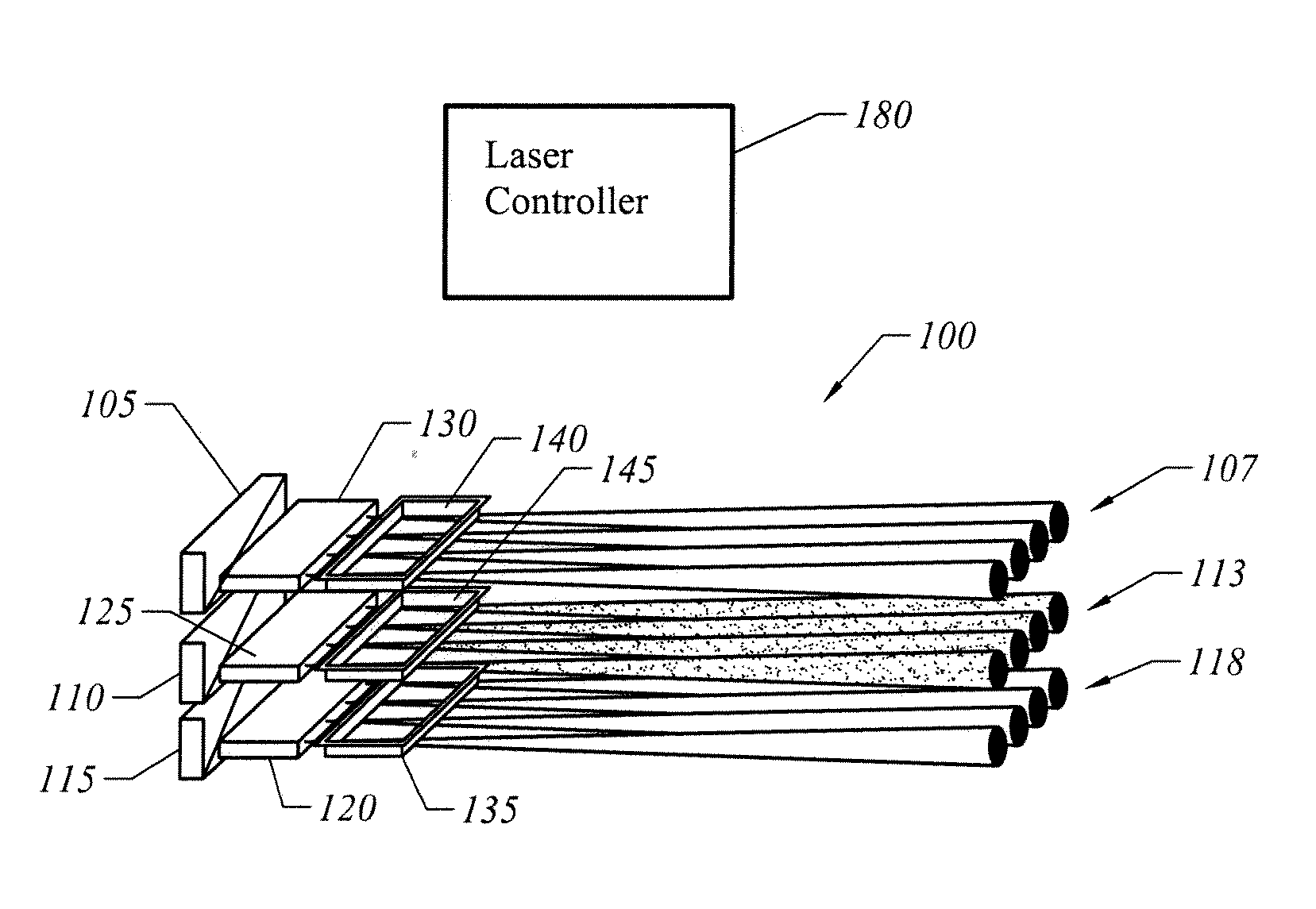Manufacturable vertical extended cavity surface emitting laser arrays
a laser array and vertical extension technology, applied in semiconductor lasers, instruments, optical elements, etc., can solve the problems of introducing artifacts, conventional dlp systems waste a considerable amount of light energy, and conventional dlp systems, so as to reduce the number of components that must be aligned during packaging
- Summary
- Abstract
- Description
- Claims
- Application Information
AI Technical Summary
Benefits of technology
Problems solved by technology
Method used
Image
Examples
Embodiment Construction
I. Basic Architecture Of Extended Cavity Surface Emitting Light Source For Projection Displays
[0065]FIG. 1 is a profile view showing a light source 100 for generating light at several different colors required by a light processing (LP) system. In a red-green-blue (RGB) LP system the light source produces red, green, and blue light. A first array 105 of semiconductor lasers is used to generate a plurality of beams 107 of blue light from two or more individual lasers. A second array 110 of semiconductor lasers is used to generate a plurality of beams 113 of red light from two or more individual lasers. A third array of semiconductor lasers 115 is used to generate a plurality of beams 118 of green light from two or more individual lasers. Thus, light source 100 includes different sets of lasers. An individual set of two or more lasers generates a particular color of light used in the LP system. However, as described below in more detail, in a preferred embodiment individual lasers in ...
PUM
 Login to View More
Login to View More Abstract
Description
Claims
Application Information
 Login to View More
Login to View More - R&D
- Intellectual Property
- Life Sciences
- Materials
- Tech Scout
- Unparalleled Data Quality
- Higher Quality Content
- 60% Fewer Hallucinations
Browse by: Latest US Patents, China's latest patents, Technical Efficacy Thesaurus, Application Domain, Technology Topic, Popular Technical Reports.
© 2025 PatSnap. All rights reserved.Legal|Privacy policy|Modern Slavery Act Transparency Statement|Sitemap|About US| Contact US: help@patsnap.com



